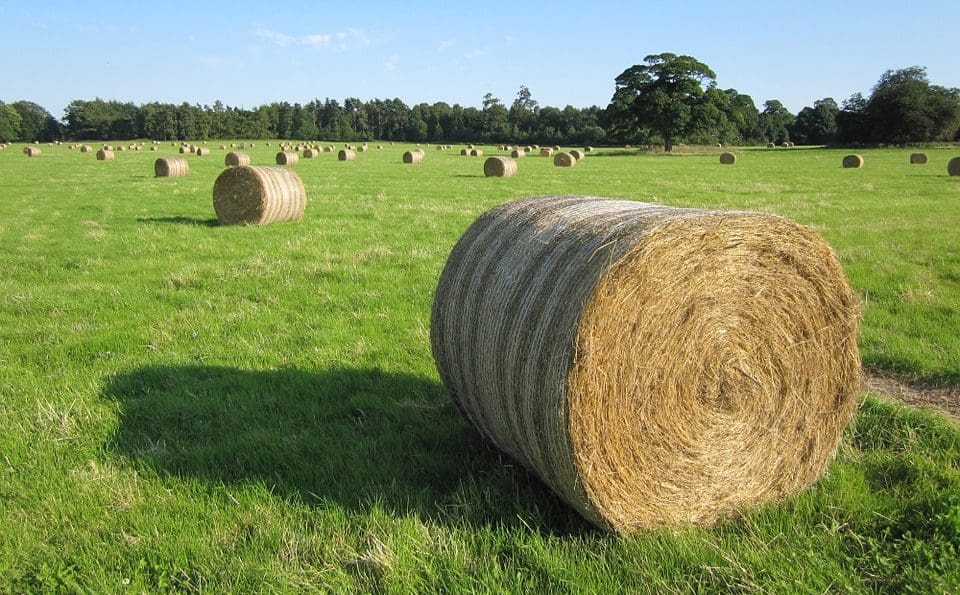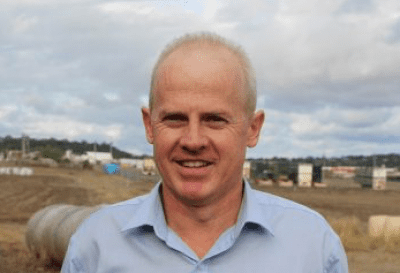A SHORTAGE of high-quality hay has emerged across the country, with a combination of widespread flooding in prime growing areas and high grain prices attributed to the problem.
Accessing paddocks has been an issue all winter and a national hay marketer says this year’s cereal hay crop is down 80 percent on the yearly average.
Feed Central managing director Tim Ford said constant flooding across New South Wales and Victoria has had the biggest bearing on the crop with windows to make hay this spring.
“Some people had decided they were going to cut some cereal crops for hay, but the weather has not allowed them to do that,” Mr Ford said.
“There is some opportunistic hay being made around the place, but the large scale professional hay growers have had really unfavourable weather. Even the places that did not flood were still getting rain when those crops needed to be cut.
“Some growers were still hopeful of cutting hay at the end of winter, even though the crops not maturing very fast with the cold weather. But there were three or four major floods that curtailed any hopes of cutting the crop.”
Reliance on pasture hay
Mr Ford said with the shortage of hay around, some growers were opportunistically cutting hay.
“There is a little flush of hay right now, which is normal at this time of year. But that hay will have to last until this time next year until there is any significant volumes again,” he said.
“We are now very reliant on irrigated and dryland pasture hay being made across the country, as well as a little bit of late season cereal.”
Mr Ford said there was also access to straw around the country, but there was some logistical issues with it.
“Some people who were thinking about making hay have decided to make straw. But transporting it is more expensive and it does not have the same place in a ration or feeding situation,” he said.
“There is other issues limiting mass straw production because you ideally need to have it shedded in the rain and some people might plough it in to put nutrients in soil.”
Tough sell for growers to consider hay
Earlier this year, Feed Central put out a call to potential hay growers to consider forages for the hay market, with many opting to grow grain for the booming market. Mr Ford said those calls were not fruitful.
“Growers have been almost 100pc focused on grain and it has been difficult to get them to think about anything else,” he said.
“Given the high grain prices and the wet weather you can’t really blame them.”
Mr Ford said demand for hay has remained strong in the past three years after demand boomed in the 2019 drought.
“There is a perception that hay is a drought only market,” he said.
“But our experience in the past couple of years is that the hay market has been quite strong off the back of the strong cattle market.”
Opportunities for summer forage
Many in the animal nutrition business say the wet weather will bring plenty of opportunities to grow dryland forages for hay and silage over summer. Lallemand Animal Nutrition’s David Lewis told Beef Central earlier this year the conditions were looking for summer crops.
“While the rain will delay some spring silage and summer planting, it will open up some good dryland summer cropping opportunities,” Mr Lewis said.
“We saw a bit of it in NSW last year, where forage was planted in areas that don’t normally grow a crop. Irrigated summer crops will also be focused on plenty of water and water prices will be low.”
That sentiment was echoed by Mr Ford, who said livestock producers in flooded areas were crying out for hay.
“While there is a commercial opportunity to make some money out of hay, there is also a need for hay and people in flood regions are crying out for it,” he said.
“Dryland lucerne and dryland pastures are good for growing hay. But if you are growing a crop specifically for hay our preference is millet. Forage sorghum is also good, but millet is our preferred option.”
Mr Lewis said producers looking at growing hay or silage for their own operation should be looking at varieties that suit their own conditions.
“We like to look at what suits a particular operation, there is a whole range of options,” he said.
“You should be looking at your farm, climatic conditions and type of animals you are looking to feed.”


